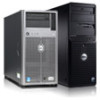Dell PowerEdge M520 Dell PowerConnect M6220/M6348/M8024 Switches Configuration - Page 63
sFlow, Overview, sFlow Collector/Analyzer
 |
View all Dell PowerEdge M520 manuals
Add to My Manuals
Save this manual to your list of manuals |
Page 63 highlights
ip https port ip https server key-generate location organization-unit show crypto certificate mycertificate show ip http show ip https state sFlow This section describes the sFlow feature. sFlow is the industry standard for monitoring high-speed switched and routed networks. sFlow technology is built into network equipment and gives complete visibility into network activity, enabling effective management and control of network resources. Overview As illustrated in Figure 3-5, the sFlow monitoring system consists of sFlow Agents (embedded in a switch, router, or standalone probe) and a central sFlow Collector. sFlow Agents use sampling technology to capture traffic statistics from monitored devices. sFlow datagrams forward sampled traffic statistics to the sFlow Collector for analysis. Figure 3-5. sFlow Architecture sFlow Agent sFlow Agent sFlow Agent sFlow Collector/Analyzer sFlow Agent The advantages of using sFlow are: • It is possible to monitor all ports of the switch continuously, with no impact on the distributed switching performance. • Minimal memory/CPU is required. Samples are not aggregated into a flow-table on the switch; they are forwarded immediately over the network to the sFlow collector. • System is tolerant to packet loss in the network (statistical model means loss is equivalent to slight change in sampling rate). Switching Configuration 63















